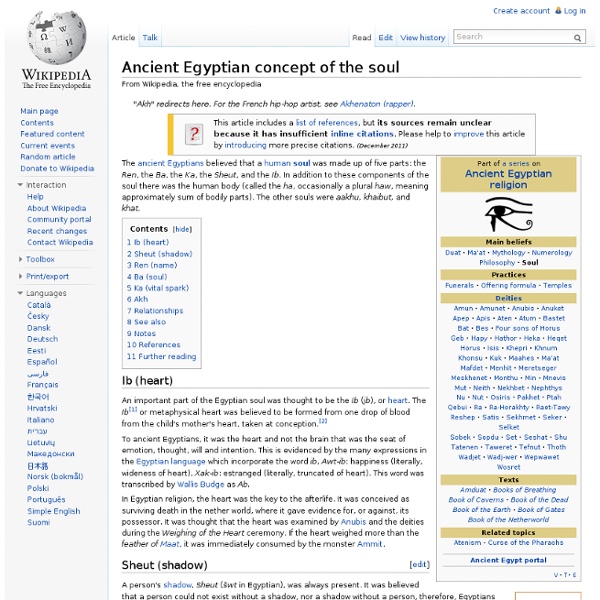Coral Castle
History[edit] According to the Coral Castle's own promotional material, Edward Leedskalnin was jilted by his 16-year-old fiancée Agnes Scuffs in Latvia, just one day before the wedding. Leaving for America, he came down with allegedly terminal tuberculosis, but spontaneously healed, stating that magnets had some effect on his disease. Edward spent over 28 years building the Coral Castle, refusing to allow anyone to view him while he worked.
Nile
River in Africa and the longest river in the world The Nile (Arabic: النيل, written as al-Nīl; pronounced as an-Nīl[needs Arabic IPA]) is a major north-flowing river in northeastern Africa, and is the longest river in Africa and the disputed longest river in the world,[2][3] as the Brazilian government says that the Amazon River is longer than the Nile.[4][5] The Nile, which is about 6,650 km (4,130 mi)[n 1] long, is an "international" river as its drainage basin covers eleven countries: Tanzania, Uganda, Rwanda, Burundi, the Democratic Republic of the Congo, Kenya, Ethiopia, Eritrea, South Sudan, Republic of the Sudan, and Egypt.[7] In particular, the Nile is the primary water source of Egypt and Sudan.[8] The Nile has two major tributaries – the White Nile and the Blue Nile. The White Nile is considered to be the headwaters and primary stream of the Nile itself. The Blue Nile, however, is the source of most of the water and silt.
Maat (Egyptian Goddess)
Maat. In Egyptian mythology, Maat is the goddess of order, the world's balance, equity, peace, truth and justice. It is the antithesis of Isfet (the god of chaos, injustice, social disorder).
Da'at
For the band, see Dååth. In Da'at, all sephirot exist in their perfected state of infinite sharing. The three sephirot of the left column that would receive and conceal the Divine Light, instead share and reveal it. Since all sephirot radiate infinite self-giving Divine Light, it is no longer possible to distinguish one sephira from another, thus they are one.
Diodorus Siculus
Diodorus Siculus (; Koinē Greek: Διόδωρος Σικελιώτης Diodoros Sikeliotes) (fl. 1st century BCE) or Diodorus of Sicily was an ancient Greek historian. He is known for writing the monumental universal history Bibliotheca historica, much of which survives, between 60 and 30 BCE. It is arranged in three parts. The first covers mythic history up to the destruction of Troy, arranged geographically, describing regions around the world from Egypt, India and Arabia to Europe. The second covers the Trojan War to the death of Alexander the Great. The third covers the period to about 60 BC.
Nimrod, Nibiru, Anunnaki
Study by: Rob Skiba In the prior post, I laid the foundation for what was going on before and immediately after the Flood as it pertains to the ancient gods. I also showed you what they did that so provoked the God of Heaven to destroy a world that had already been thoroughly corrupted. The Pre-Flood world was an amazing and terrifying place full of hybrids.
Plutarch
Plutarch (/ˈpluːtɑrk/; Greek: Πλούταρχος, Ploútarkhos, Koine Greek: [plǔːtarkʰos]; later named, on his becoming a Roman citizen, Lucius Mestrius Plutarchus (Λούκιος Μέστριος Πλούταρχος);[a] c. 46 – 120 AD),[1] was a Greek historian, biographer, and essayist, known primarily for his Parallel Lives and Moralia.[2] He is considered today to be a Middle Platonist. Early life[edit] Ruins of the Temple of Apollo at Delphi, where Plutarch served as one of the priests responsible for interpreting the predictions of the oracle.
Crop circle shows recreation and beginning of 7th day
The end of time actually refers to the end of the 9 underworlds or 9 ever shortening periodes that all end on the end-date. The last opening of an underworld occured during the period of August 10 to 13, 1999 and concerned the start of the eight underworld. Each underworld can be divided in 13 periodes. According to the theory of the Maya-researcher Carl Johan Calleman these 13 periods can be considered as 7 "days" that alternate with 6 "nights".
Shabaka Stone
Shabaka Stone on display in The British Museum. The stone measures 0.66 by 1.37 metres (2 ft 2 in by 4 ft 6 in). The Shabaka Stone, sometimes Shabaqo, is a relic incised with an ancient Egyptian religious text, which dates from the Twenty-fifth Dynasty of Egypt.[1] In later years, the stone was likely used as a millstone, which damaged the hieroglyphs. This damage is accompanied by other intentional defacements, leaving the hieroglyphic inscription in poor condition. Provenance[edit]
The Sumerian 'Stargates'
Part II.... The primary concern of the Gilgimish epic is of of the journey to the Masu mountains, the descent of Gilgimish into the underworld, his search for the plant of Life, his entrance into the Heavenly realms, along the road of the sun, ie ecliptic plane; The Mashu mountains I give to you freely (!), the mountains, the ranges, you may traverse ... In safety may your feet carry you.
Fifth Dynasty of Egypt
Dynasty of ancient Egypt, during the Old Kingdom Period, in the early 25th to mid 24th centuries BC The Fifth Dynasty of ancient Egypt (notated Dynasty V) is often combined with Dynasties III, IV and VI under the group title the Old Kingdom. The Fifth Dynasty pharaohs reigned for approximately 150 years, from the early 25th century BC until the mid 24th century BC. Chronology[edit]
Sin (mythology)
Impression of the cylinder seal of Ḫašḫamer, ensi (governor) of Iškun-Sin ca. 2100 BC. The seated figure is probably king Ur-Nammu, bestowing the governorship on Ḫašḫamer, who is led before him by a lamma (protective goddess). Sin/Nanna himself is indicated in the form of a crescent.
Horus
Egyptian war deity Etymology[edit] Nekheny may have been another falcon god worshipped at Nekhen, city of the falcon, with whom Horus was identified from early on. Horus may be shown as a falcon on the Narmer Palette, dating from about the 31st century BC.



